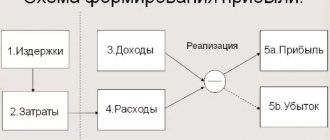What is a concern in simple words
A concern (from the English “concern”) is a type of association of several independent organizations operating in different sectors of the economy. Each of the entities upon entering the concern will lose only part of their independence due to the overall policy, strategy and leadership.
The leader of the concern is almost always one of the largest companies. It owns a controlling stake in the assets of other companies or enters into a cooperation agreement. In this case, this concern will have common characteristics with such an association as a holding. In some cases, the concern includes equal organizations that agree on cooperation based on a common market strategy and agreement.
Regardless of the type of relationship within the association, the concern’s participants must choose a single leadership that will have all the necessary capabilities and tools to control all enterprises, not only through ownership, but also through reputation, influence and direct management.
In most cases, the concern combines manufacturing enterprises that control smaller trading, transport and financial organizations. Control over the latter is one of the characteristic features of concerns.
For example, if we talk about the German concern Volkswagen, it includes not only those enterprises that produce cars. It unites organizations operating in the financial, electronics, shipbuilding and other industries.
Regarding Russian legislation, it does not talk about such a concept as a “concern”. In this regard, experts face a number of problems in interpreting this concept. Depending on the source, you can find different characteristic features of the concerns. This will happen until the official concept of concerns is defined at the legislative level.
Comparison
The main difference between a holding and a corporation (if the second term is considered as an association of firms) is that the first is significantly more centralized. As we noted above, a controlling stake in holding companies most often belongs to the parent company. For classical corporations, such a scheme for organizing business management is not typical. Centralization in such structures can only be expressed in the establishment of some general management bodies - such as, for example, a board of directors.
Having found out what the difference is between a holding and a corporation, we will display the criteria we have identified in the table.
Varieties and classification
Concerns are characterized by different organizational structures. Depending on these features, there are three main types of associations:
- Vertical;
- Horizontal;
- Mixed;
Having an idea about each of the varieties, they can be easily identified by studying the participants in a particular market.
2.1. Vertical concerns
In this case, the concern is an association of several organizations that form the entire product production cycle. The first stage of the cycle is the purchase of raw materials, and the last stage is sales. One of the most striking examples of such a concern on the Russian market is Lukoil. It accounts for approximately 3% of global oil production. The business model of this concern consists of the operation of a large number of enterprises.
Since each organization in the group is part of a larger chain, they depend on each other. For example, some companies are engaged in exploration of the location of gas or oil deposits, while others produce, process and, at the last stage, sell. Often, already established retail and wholesale networks are used for this.
Considering the situation using the example of Lukoil, at the stage of oil production and thanks to the centralization of finance and production resources, the concern manages to achieve low costs of extracted raw materials. Then, the concentration of production and the possibility of sales helps the association to get rid of the dependence of price fluctuations on the world market.
In the future, this will help increase your competitiveness. Also, do not forget that large concerns, including Lukoil, distribute risks in the following way:
- Investing. We are talking about investing capital in the production of electricity using traditional methods, that is, using mined raw materials. This type of risk distribution is called “linked”;
- Creation and operation of renewable energy capacities. We are talking about wind and solar energy. This risk sharing is called “decoupled.”
Vertical concerns are among the most financially stable, which is ensured by their own and independent production cycle.
- Responsible ESG investing;
2.2. Horizontal
Here we are talking about an association of several organizations operating in one area of the economy. In this case, enterprises produce a similar product, but the consumer is different. An example would be any concern engaged in tailoring, whose enterprises are located in several countries around the world.
Such concerns are highly competitive due to their activities in several countries simultaneously. This effect is also achieved thanks to a large assortment of clothes for different clients. For example, we can talk about sportswear, classic or fashionable for men, women and children.
2.3. Mixed
In a modern market economy, mixed concerns are the most common. The group unites diverse organizations regardless of the type of economic activity.
At the same time, the concern is characterized by unified financial control. In some cases, mixed associations are formed through the absorption of smaller organizations. One of the most striking examples of such a concern is Japanese. It includes more than 1,000 small and medium-sized organizations.
Features of conglomerates
A conglomerate is an association of a mixed type, which makes sense to be considered in a special manner. This is an association of heterogeneous entities, in which production capacity is not formed. In America, a conglomerate is a concern formed in a short time by absorbing a large number of independent companies. Let's look at the main features of conglomerates:
- Subjects unite, but at the same time they do not have a production community.
- The entities retain their independence, but at the same time they are dependent on the central company.
- There is decentralization. Different subjects have different degrees of freedom.
- The central management tool is financial and economic.
The specifics and structure of conglomerates depend on the specific state. Let's consider the goals of forming such associations:
- Formation of a synergistic effect.
- Formation of an expanded economic framework.
- Opportunity to purchase goods from suppliers at preferential prices.
- Image creation.
Creating a conglomerate makes sense if access to innovation is a priority.
Types of joins
There are such options for combining organizations into a concern as:
- Consortium. The concern is established on the basis of a temporary agreement for the implementation of any specific projects;
- Association. Characterized by the voluntary entry of organizations into the concern. These can be both legal entities and individuals. Each of the group members pursues only one goal, this is making a profit or some non-commercial goals in rare cases;
- Cartel (what is a cartel). The concern unites organizations operating in the same industry. They enter into agreements with each other on the range of products produced, methods of distribution, dividing the market into certain shares and setting prices at a specific level. This type of group, in most cases, is disastrous for smaller organizations that decide not to be part of the concern.
Characteristic features of the holding[edit | edit code]
- Concentration of shares of firms in different industries and sectors of the economy or firms located in different regions.
- Multi-stage, that is, the presence of subsidiaries, grandchildren and other related companies. Often a holding is a pyramid headed by one or two companies, often of different nationalities.
- Centralization of management within the group through the development of a global policy by the parent company and coordination of joint actions of enterprises in the following areas:
- development of unified tactics and strategy on a global scale;
- reorganization of companies and determination of the internal structure of the holding;
- implementation of intercompany relations;
- financing capital investments in the development of new products;
- provision of consulting and technical services.
Financial structure
There are 2 types of financial organization of concerns:
- Coordination scheme. We are talking about the presence in the association of several equal organizations, whose cooperation is built on mutually beneficial conditions. In fact, this process is carried out through the exchange of assets. This is necessary to ensure that each organization is the property of the other. In the future, this makes it possible to make any strategic decisions together during the meeting of shareholders;
- Subordination scheme. In this case, the concern is headed by the parent company (parent company), and the rest (subsidiaries) are financially subordinate to it. This structure is observed in vertical type associations. The parent organization is developing the basic concept of development, as well as the economic activities of the concern. Other companies must unconditionally follow its instructions of this nature.
general information
A holding is a joint-stock enterprise that has a major stake in securities in independent, from a legal point of view, firms and controls the activities. All production units included in the joint network conduct all operations on their own behalf, but the privilege of key settlement of issues regarding the activity remains with the holding company.
The main advantage of such a structure is the ability to fight competitors through joint, united efforts. The parent company in the holding has advantages, which are represented by the right:
- to develop plans for the further development of the entire network;
- formation of a unified policy on investment or financial activities;
- management of secondary enterprises;
- decisions on the sale of manufactured products and the purchase of raw materials;
- carrying out foreign economic activities;
- carrying out financial and credit policies within the association.
The formation of a corporation makes it possible to revive administrative methods of coordinating work. Management implies the possibility of replacing management personnel by decision of shareholders, assessment of possible risks when managing cash flows as part of the overall strategy.
Pros and cons of concerns
Once an organization is part of the concern’s unified network, it has the opportunity to take advantage of a number of advantages. In the future, each of them helps to increase the level of competitiveness.
Pros:
- If difficult times come for the market, companies can survive them by receiving financing from some other group entities;
- If any mutual complaints arise between the companies, a third party can intervene and find ways to resolve the problem. We are talking about a company that is the parent company within the concern. Thanks to this, such disputes between association organizations almost never reach legal proceedings, which will also entail financial costs;
- Association entities can take advantage of preferential conditions in the trading process. Thus, some organizations provide themselves with regular customers, and other participants provide supplies at attractive prices. This advantage can also be attributed to the auxiliary types of work of the association. We can talk about insurance or transport companies;
- If one of the companies has achieved scientific progress and invented something, in the future, it will become the property of each of the entities of the concern.
For an organization, joining a concern is not always accompanied by only advantages. Speaking of disadvantages, almost all of them are related to the fact that, regardless of the type of association, they are a form of monopoly. It is also worth considering that the organization’s proximity to monopoly status negatively affects competition within the market, which in the future may negatively affect it in the following way:
Minuses:
- Scientific and technological progress will be slowed down. This is explained by the fact that organizations have no one to compete with, so the pace of technology development slows down significantly;
- Bureaucratization. Due to the huge management apparatus, each decision is accompanied by a large number of approvals, which entails significant time costs;
- If new promising organizations appear on the market, they will not be able to compete with the concern;
- An organization that is part of an association partially loses its independence.
Agroholding[edit | edit code]
An agricultural holding is a group of legal entities engaged in agricultural activities and sales of agricultural products. In other words, an agricultural holding is a holding company that is engaged in food production (providing food to the population). In turn, a holding (from the English holding “possession”) is a combination of a parent (management) company and its controlled subsidiaries, a holding company specializing in the agricultural industry.
Formation
The process of creating a holding company can be carried out using several methods at once. In the case of using a horizontal integration model, all companies that conduct the same business are joined into one structure.
At the same time, the vertical method of integration means that several structures included in the system of a single production cycle will be combined. Such a structural arrangement often helps to reduce existing production costs, and also makes it possible to significantly increase the market capitalization of a commercial organization.
Also, the creation of a holding can occur as part of the formation of new companies with their subsequent inclusion in the general structure of the holding. Several separate holdings can also merge into a single holding corporation.
Conclusion
A distinctive feature of holding companies is the use of the organization's own capital to purchase securities of other enterprises. The activities of holding corporations are regulated by antimonopoly and tax laws.
Sources
- https://zen.yandex.ru/media/sharespro/chto-takoe-holdingovaia-kompaniia-i-chem-ona-zanimaetsia-5c86383adbfb6c00b591c5b0
- https://www.grandars.ru/college/ekonomika-firmy/holding.html
- https://fin-site.ru/chto-takoe-xolding-ponyatnymi-i-prostymi-slovami.html
- https://vsdelke.ru/biznes/holding.html
- https://www.klerk.ru/boss/articles/462386/
- https://dengi.temaretik.com/1260867384070113396/o-tom-chto-takoe-holding-prostymi-slovami/
- https://biznes-prost.ru/kompaniya-xoldingovaya.html
- https://rtiger.com/ru/journal/chto-takoe-holding/
- https://microzajmi.ru/chto-takoe-holding-prostymi-slovami/
- https://assistentus.ru/vedenie-biznesa/holding/
- https://dvayarda.ru/business/holding/
[collapse]
Vertical integration
This is the accession to the holding of enterprises whose main activity fits into a single technological chain of production of finished products of the existing holding, which makes it possible to create a closed production cycle.
The main advantage of vertical integration is significant cost savings, which for the most part consists of profits included in the price of suppliers of raw materials, materials and components necessary for the production of the holding's main products.
In the event of the merger of supplier enterprises or companies replacing previous suppliers, profits and invoices previously included in the purchase price remain in the holding. In addition, effective management, optimization, rationing and strict control of resource consumption in the process of economic activities of companies merged into a holding can bring additional savings.
Legislative regulation
Holding companies receive virtually no attention in regulations. The Civil Code of the Russian Federation does not have this concept at all. For the first time in legislation, the holding was noticed in the RSFSR law of July 3, 1991 “On the privatization of state-owned enterprises.” However, it does not provide a precise definition of groups of companies. The term is explained only in Decree of the President of the Russian Federation No. 1392. However, this normative act refers only to organizations arising as a result of privatization.
FOR YOUR INFORMATION! We can say that holdings are practically not regulated by legal acts. They are managed on the basis of established practice.










